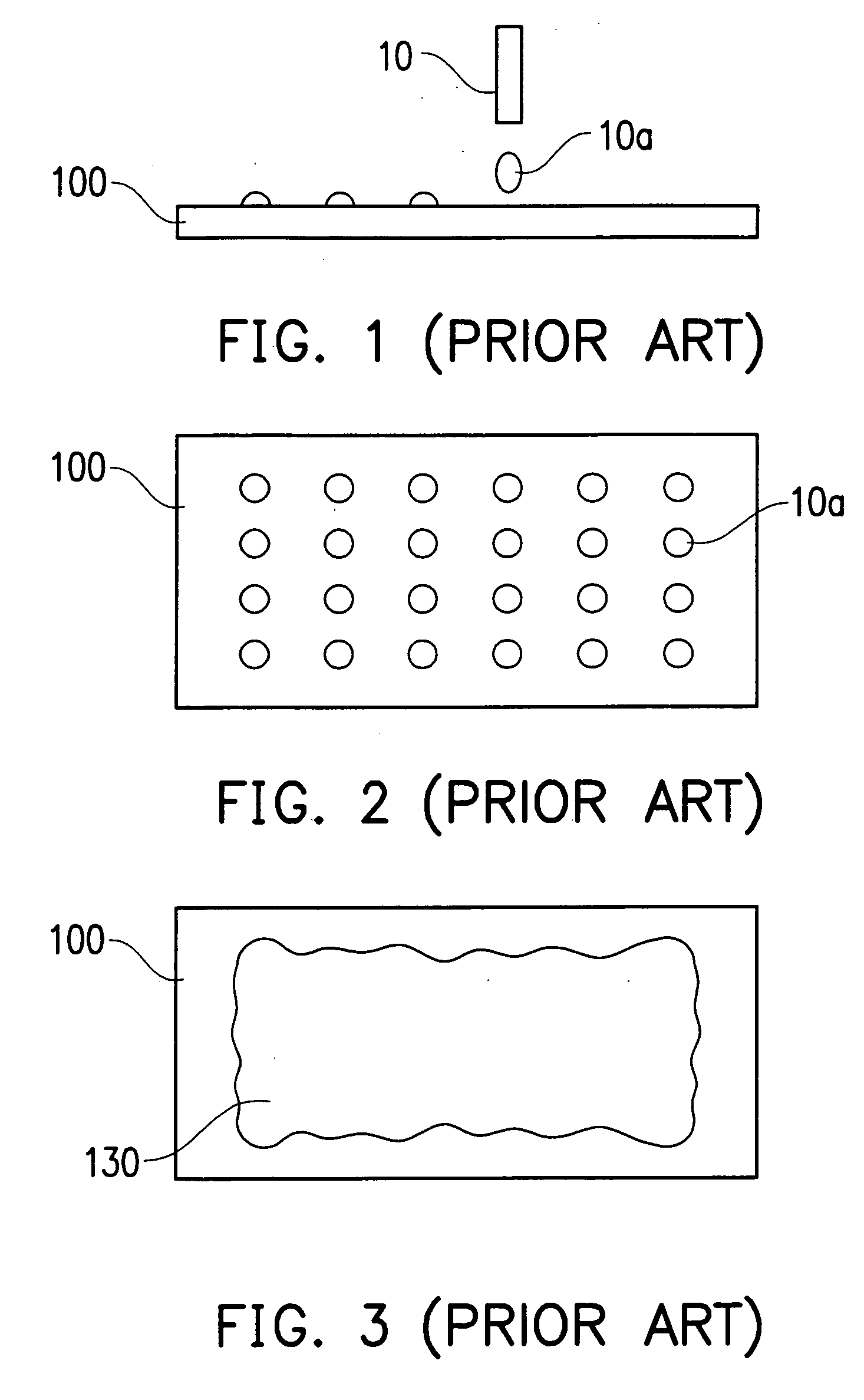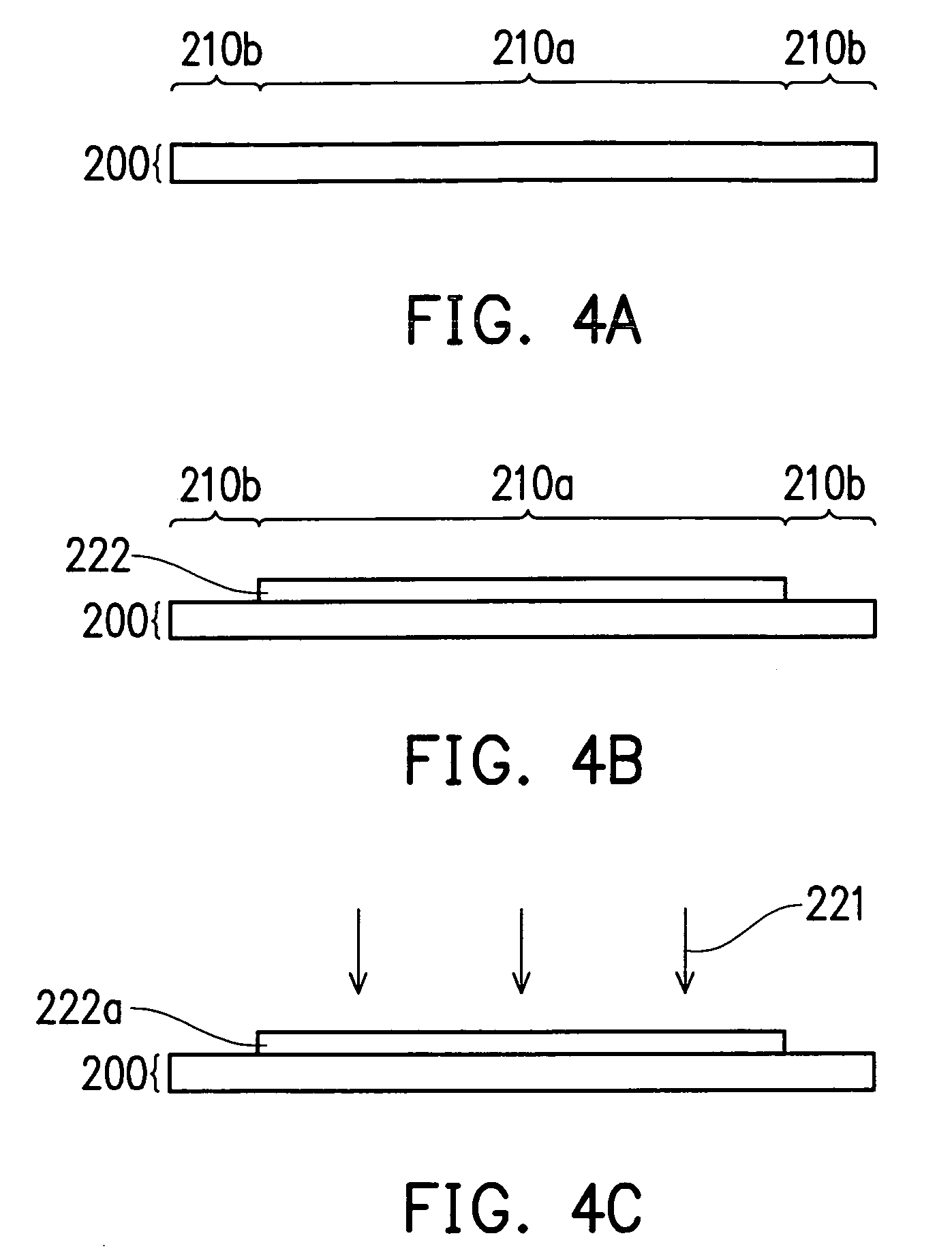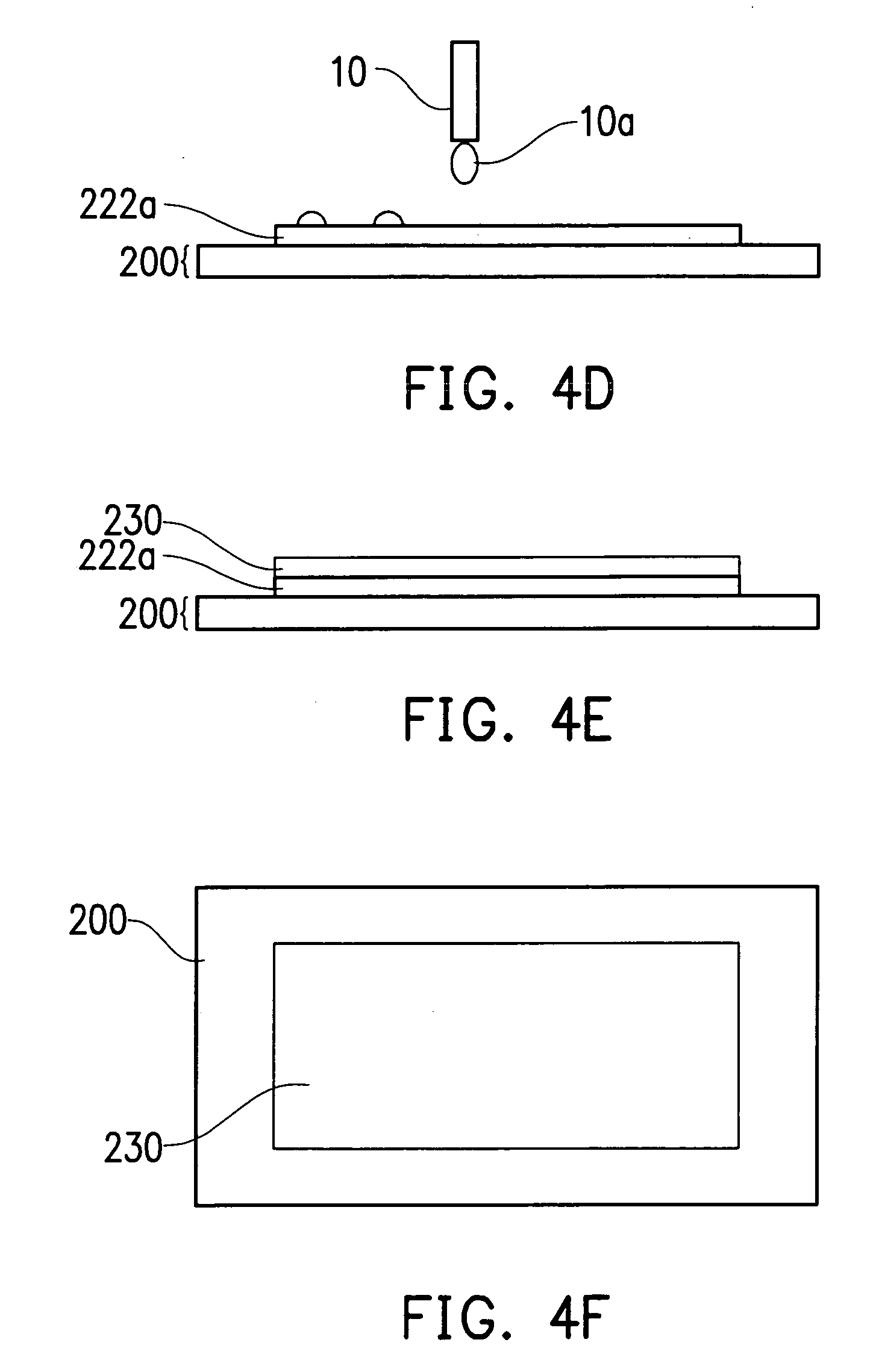Substrate structure of liquid crystal display and method of forming alignment layer
a liquid crystal display and substrate structure technology, applied in the direction of instruments, nuclear engineering, transportation and packaging, etc., can solve the problems of poor uniformity of the alignment layer and the difficulty of controlling the profile of the alignment layer, so as to improve the displaying quality of the liquid crystal display, improve the uniformity of the layer, and improve the film properties
- Summary
- Abstract
- Description
- Claims
- Application Information
AI Technical Summary
Benefits of technology
Problems solved by technology
Method used
Image
Examples
first embodiment
[0055]FIGS. 4A-4E are cross sectional views showing a method of forming an alignment layer according to a first embodiment of the present invention. Referring to FIG. 4A, a substrate 200 is first provided. The substrate 200 comprises a display area 210a and a non-display area 210b. In an embodiment, the substrate 200 can be, for example, a thin film transistor array substrate which comprises, for example, thin film transistors (TFTs), indium-tin-oxide (ITO) pixel electrodes, scan lines and data lines. In another embodiment, the substrate 200 can be, for example, a color filter substrate which comprises red, green and blue resins, black matrixes (BMs) and common electrodes.
[0056] Then, a hydrophilic layer 222a is formed on the surface of the substrate 200 of the display area 210a. In a preferred embodiment, the method of forming the hydrophilic layer 222a is described below. Referring to FIG. 4B, a silicon oxide layer 222 is first deposited on the substrate 200, for example, by a ch...
second embodiment
[0063]FIGS. 5A-5E are cross sectional views showing a method forming an alignment layer according to a second embodiment of the present invention. Referring to FIG. 5A, a substrate 200 is first provided. The substrate 200 comprises a display area 210a and a non-display area 210b. The substrate 200 can be, for example, a thin film transistor array substrate or a color filter substrate.
[0064] Then, a hydrophobic layer 242a is formed on the substrate 200 of the non-display area 210b. In a preferred embodiment, the method of forming the hydrophobic layer 242a is described below.
[0065] Referring to FIG. 5B, first a material layer 242 is deposited on the substrate 200, for example, by a plasma-enhanced chemical vapor deposition (PECVD) method. The material layer 242 can be, for example, a polysilicon layer, an amorphous silicon layer, a silicon nitride layer, or a combination thereof. A photolithographic process and an etching process are then performed to remain the material layer 242 ...
third embodiment
[0071] This embodiment is an application of combining the processes of the first embodiment and the second embodiment. FIGS. 6A-6F are cross sectional views showing a method of forming an alignment layer according to a third embodiment of the present invention. Referring to FIGS. 6A and 6B, which show the steps of forming the patterned silicon oxide layer 222, as described in the first embodiment. Referring to FIG. 6C, it shows forming the patterned material layer 242 in the non-display area 210b, as described in the second embodiment.
[0072] Referring to FIG. 6D, a treatment step 221 is performed to the silicon oxide layer 222 in the display area 210a and the material layer 242 in the non-display area 210b so that the silicon oxide layer 222 becomes a hydrophilic layer 222a and the material layer 242 becomes a hydrophobic layer 242a. The treatment step 221 can be, for example, a UV light exposure process, a laser process or a plasma process. The hydrophilic layer 222a and the hydro...
PUM
| Property | Measurement | Unit |
|---|---|---|
| area | aaaaa | aaaaa |
| hydrophilic | aaaaa | aaaaa |
| hydrophobic | aaaaa | aaaaa |
Abstract
Description
Claims
Application Information
 Login to View More
Login to View More - R&D
- Intellectual Property
- Life Sciences
- Materials
- Tech Scout
- Unparalleled Data Quality
- Higher Quality Content
- 60% Fewer Hallucinations
Browse by: Latest US Patents, China's latest patents, Technical Efficacy Thesaurus, Application Domain, Technology Topic, Popular Technical Reports.
© 2025 PatSnap. All rights reserved.Legal|Privacy policy|Modern Slavery Act Transparency Statement|Sitemap|About US| Contact US: help@patsnap.com



